If you've been looking for the perfect router to carry on the go and can't justify the Netgear M6 Pro's agonizing $1000 price tag, the Asus RT-AX57 Go AX3000 Dual Band Wi-Fi 6 Travel Router, first announced in the last days of 2023 and recently available for purchase, is the much-needed relief.
Among other things, this router won't mercilessly poke a giant hole in your wallet. Here's a bit of math: at the street price of around $130, you can literally buy seven RT-AX57 Go units with the amount of cash you've repeatedly failed to budget for the M6 Pro and still have some change. And chances are you only need one.
So what's the catch? For a travel router, there seems to be nothing I can think of. But the new Asus RT-AX57 Go is not perfect, either. Or is it?
Dong's note: I first published this post on December 29, 2023, as a preview and updated it on February 14, 2024, to an in-depth review after thorough hands-on testing.

RT-AX57 Go: Honey, I shrunk our Wi-Fi router!
The heading says it all. Take an Asus AX3000 router, such as the RT-AX58U or the probably more accurately comparable RT-AX57, and shrink it into a square box that is less than 5-inch wide and three-quarter inch thick, and you get yourself the RT-AX57 Go.
So, if you have used an Asus router before, you'll feel right at home with this new travel option. Its most significant difference from the rest of Asus's RT series is its miniature physical size.
Asus's Wi-Fi hardware
Asus has a vast collection of Wi-Fi hardware options available in the following series:
- The RT series: General consumer-grade standalone routers ranging from entry-level, mid-range, and high-end models. Improved variants might carry the "Pro" suffix, such as the RT-AX88U Pro. Some models include gaming-related features, such as the RT-AX82U. Most feature AiMesh as an option.
- The TUF and ROG series: Gaming-related Wi-Fi routers of different tiers, including the highest-end flagship routers. Improved variants, such as the GT-AX11000 Pro, might carry the "Pro" suffix.
- The ZenWiFi series: This series includes consumer-grade purpose-built AiMesh-based Wi-Fi systems with a broad range of configurations. Some variants have built-in MOCA or Powerline support.
- The ExpertWiFi series: Hardware for networking enthusiasts and office environments. These are AiMesh-enabled business-oriented solutions with more advanced options in network customization and hardware design, available as purpose-built mesh systems, single (Wi-Fi) routers, APs, and switches.
Generally, all AiMesh-enabled hardware—most, if not all, Asus Wi-Fi 6 or newer routers—can work together to form a system.
The new Asus travel router is slightly larger but slightly lighter than the Netgear M6 Pro. The table below shows the hardware specs of these two similar-looking but vastly different travel Wi-Fi solutions.
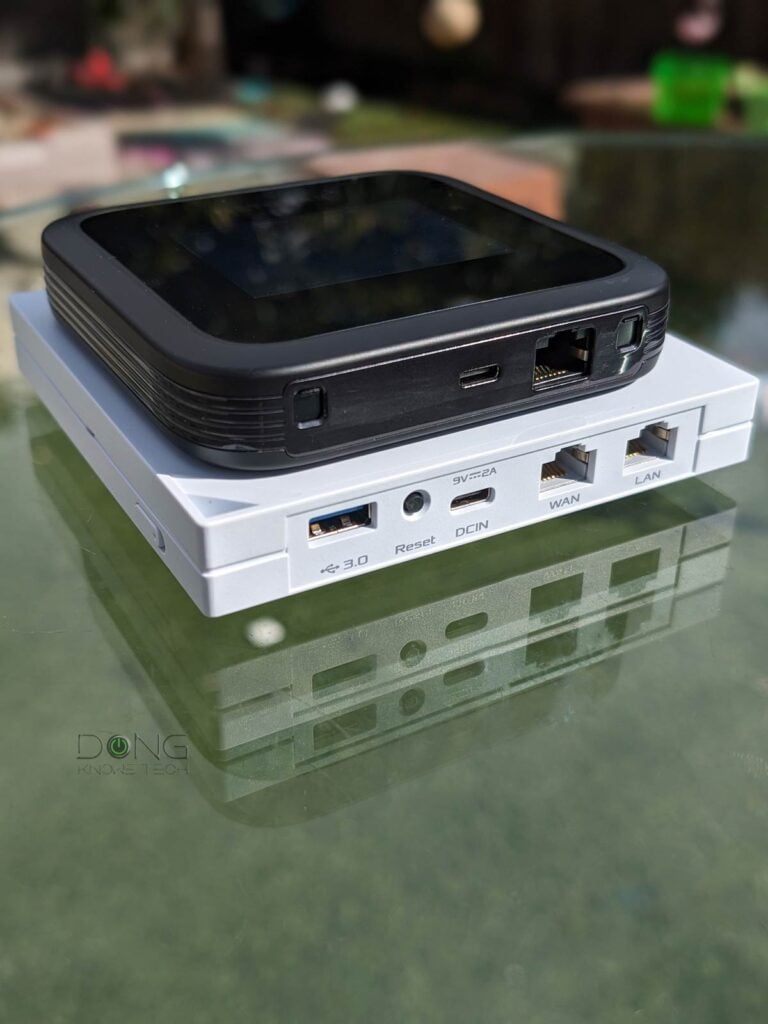
Asus RT-AX57 Go vs. Netgear Nighthawk M6 Pro: Hardware specifications
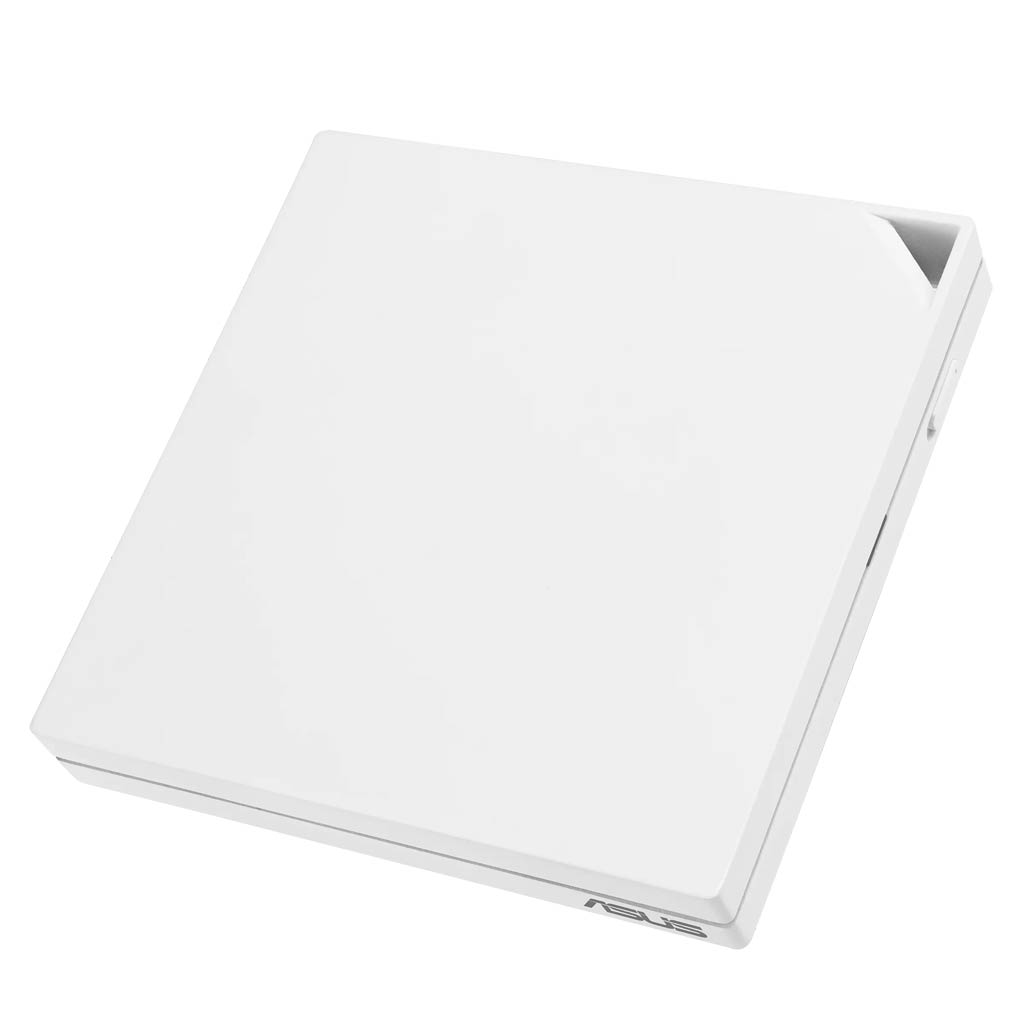 | 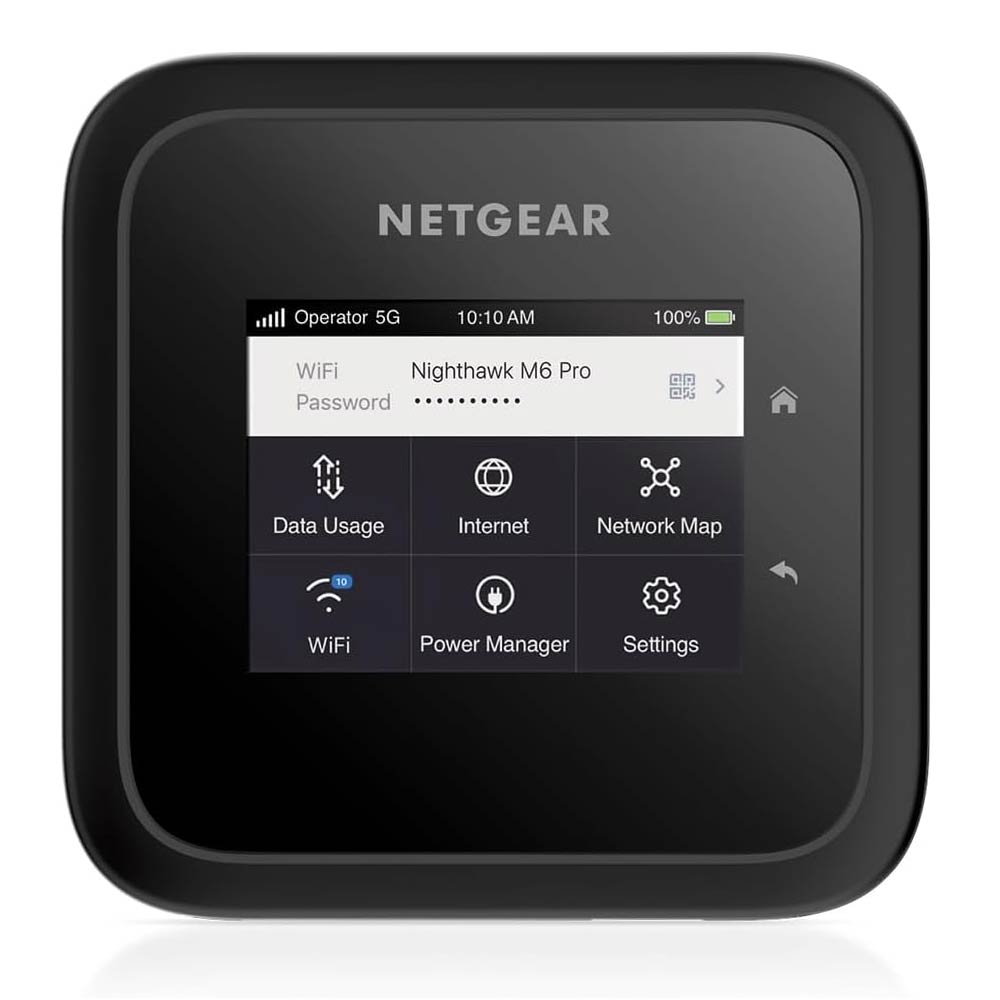 | |
|---|---|---|
| Full Name | Asus RT-AX57 Go AX3000 Dual Band WiFi 6 (802.11ax) Travel Router | Netgear MR6110 Nighthawk M6 Pro Mobile Router |
| Model | RT-AX57 Go | M6 Pro |
| Dimensions | 4.72 x 4.72 x .85 in (120 x 120x 21.5 mm) | 4.14 x 4.14 x .85 in (105 x 105 x 21.5 mm) |
| Weight | 7.1 oz (200 g) | 8.9 oz (252 g) |
| Processing Power | Dual-core 1.3GHz SoC, 256 MB Flash, 512 MB RAM | Dual-core CPU |
| Wi-Fi Technology | Dual-band AX3000 | Dual-band AXE3600 |
| 1st Band | 2.4GHz 2x2 AX: Up to 600Mbps (20/40 MHz) | |
| 2nd Band | 5GHz 2x2 AX: Up to 2.4 Gbps (20/40/80/160MHz) | 5GHz 2x2 AX: Up to 2.4 Gbps (20/40/80/160MHz) Or 6GHz 2x2 AXE: Up to 2.9 Gbps (20/40/80/160MHz) |
| Backward Compatibility | 802.11a/b/g/n/ac | |
| Wireless Security | WPA, WPA2, WPA3 | |
| Built-in Cellular Modem | None | 5G |
| Mobile App | Asus Router | None |
| Web User Interface | Yes (open-source AsusWRT) | Yes (proprietary) |
| Networking Features | All Asus Routers' Core Features, for example: Advanced VPN (WireGuard and OpenVPN server or client supported) AiProtection Parental Control QoS AiMesh | Guest Network VPN passthrough Website Filtering |
| Operating Roles | Mobile hotspot (via a tether cellular mode/phone) Wi-Fi (AiMesh) router/(AiMesh node) Wi-Fi repeater (WISP mode), Wi-Fi bridge, Wi-Fi access point | Mobile hotspot/USB cellular modem, Wi-Fi router, Wi-Fi repeater (WISP mode), |
| Firmware Version (at review) | 3.0.0.6.102_22188 | NTGX65_10.04.22.00 |
| USB Port | 1x USB-C (charging) 1x USB 3.0 (all USB-related features) | 1x USB-C (charging/data) USB 3.0 |
| Gigabit Port | 1x LAN, 1x WAN | None |
| Multi-Gig Port | None | 1x 2.5Gbps WAN/LAN |
| Dual-WAN | Yes (WAN+LAN/USB) | No |
| Link Aggregation | No | |
| Power Intake | 110V- 240V | Internal battery (up to 13 ours) 110V- 240V |
| Power Consumption (per 24 hours) | ≈ 130 Wh | ≈ 70 Wh (measured when plugged in, battery removed) |
| US Price (at launch) | $129.99 | $999 |
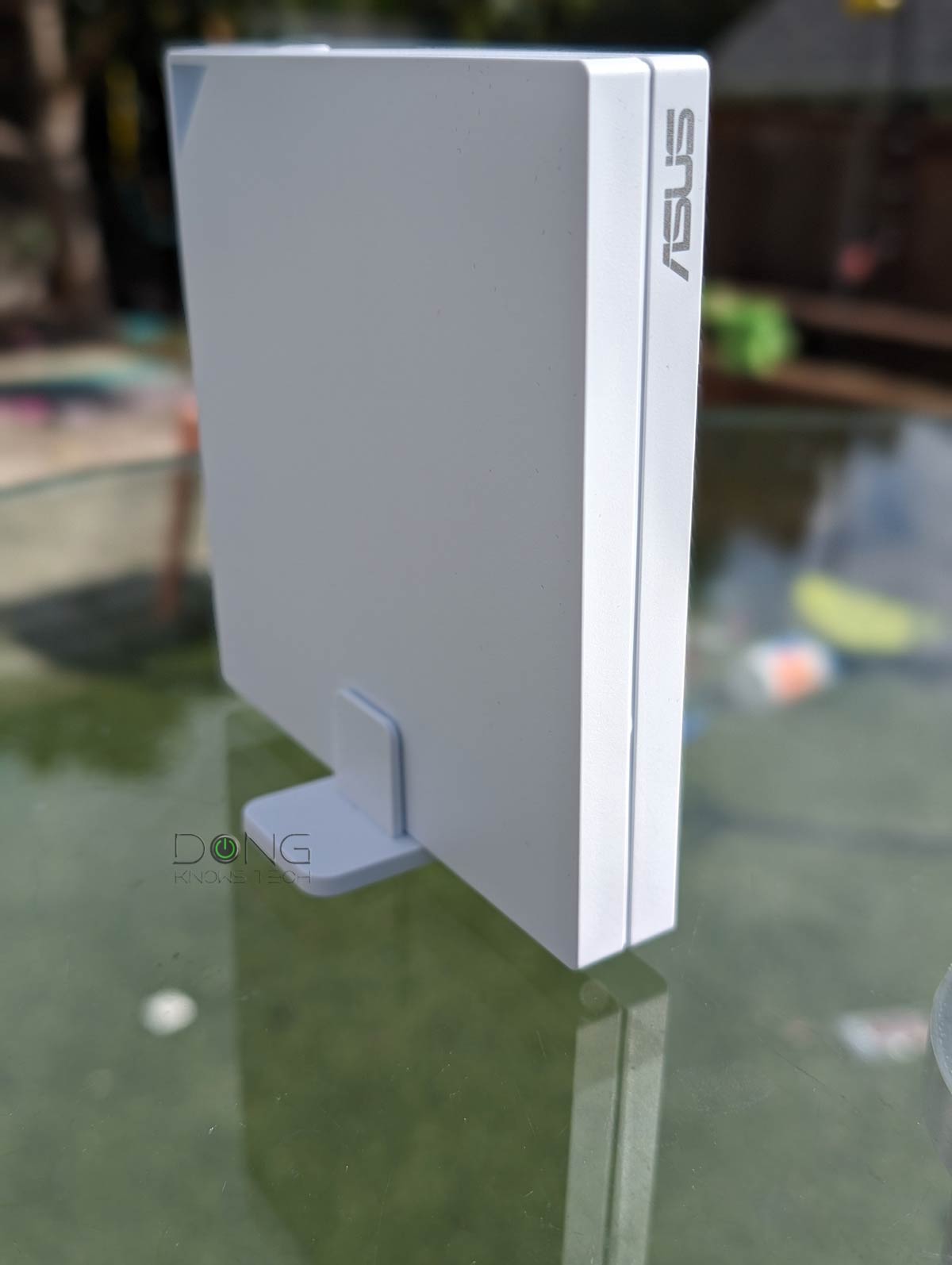
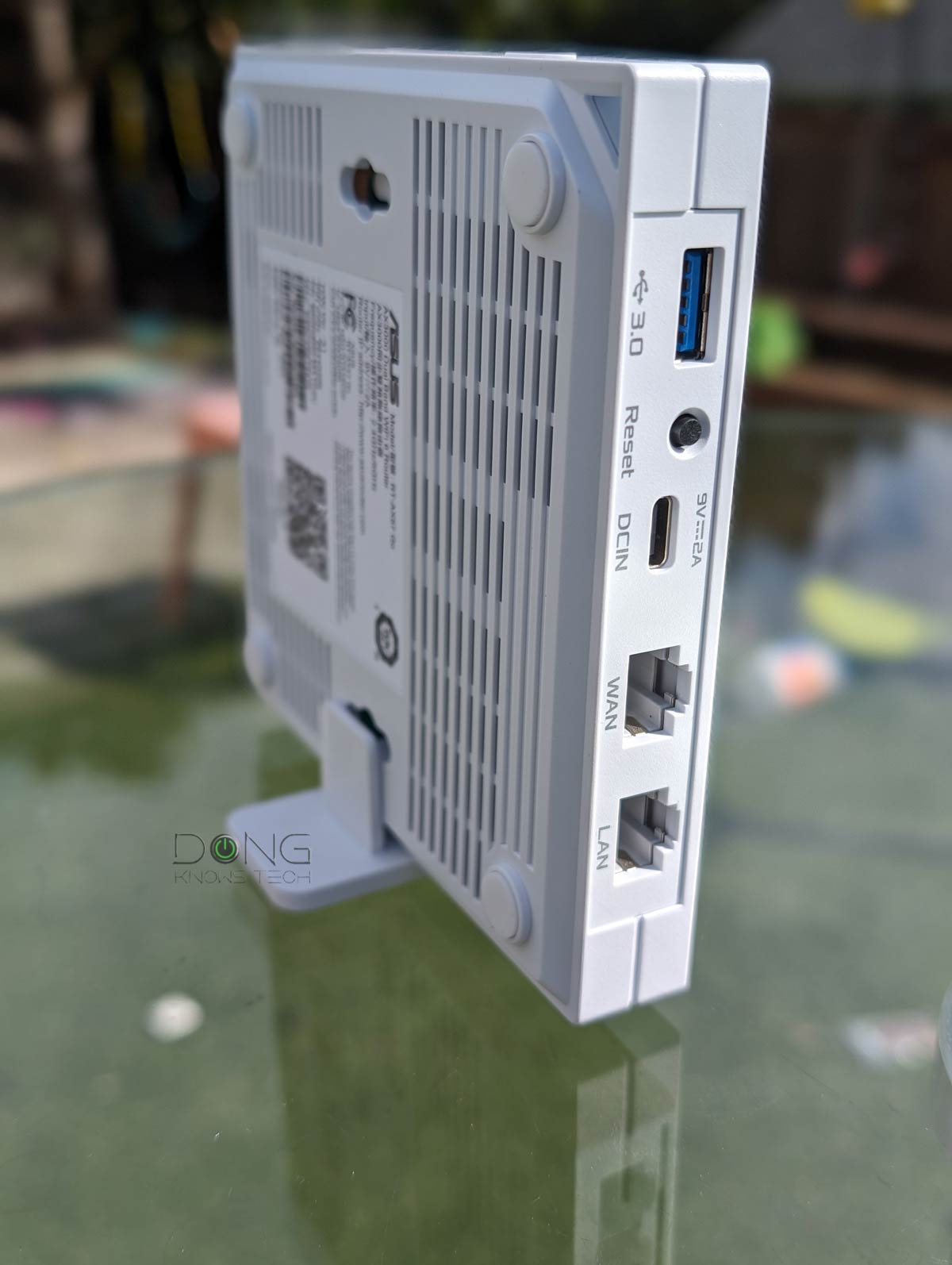
The router uses a USB-C port for charging, making it a perfect fit on the go since it shares the same charging cable as most other devices. The other USB-A port is to host a device as part of its USB-related features.
A flexible broadband/Wi-Fi solution for travelers or those in a small home
As shown in the table above, the RT-AX57 Go is not a mobile hotspot since it has no built-in cellular modem and no SIM slot.
While this seems a shortcoming, that can be a good thing since most of us have a phone. All you need to do is plug a smartphone into its USB port, turn on the tethering features of the phone, and the router will automatically use the cellular connection as the Internet source. And it can charge the phone simultaneously.
So, for cellular connection, you can think of the RT-AX57 Go as the magnifier of a phone's personal hotspot feature. On the upside, you won't need a separate data plan for it. In return, if you want to use the phone at the same time, such as for calling, then this router is a bit inconvenient. You'd need a very long USB cable, use the phone's loudspeaker, or turn on its personal hotspot mode and use the router in the WISP mode, which is not ideal for performance due to interference.
To make up for this lack of an internal cellular modem, the new travel router can work as a traditional router—connect its WAN port to an Internet source, such as a Fiber-optic ONT, a cable modem, or a wired port at a hotel and you're ready.
For travelers, the RT-AX57 Go has another fitting trick: It can handle a public Wi-Fi connection and use it as the Internet source for its network via the WISP mode.
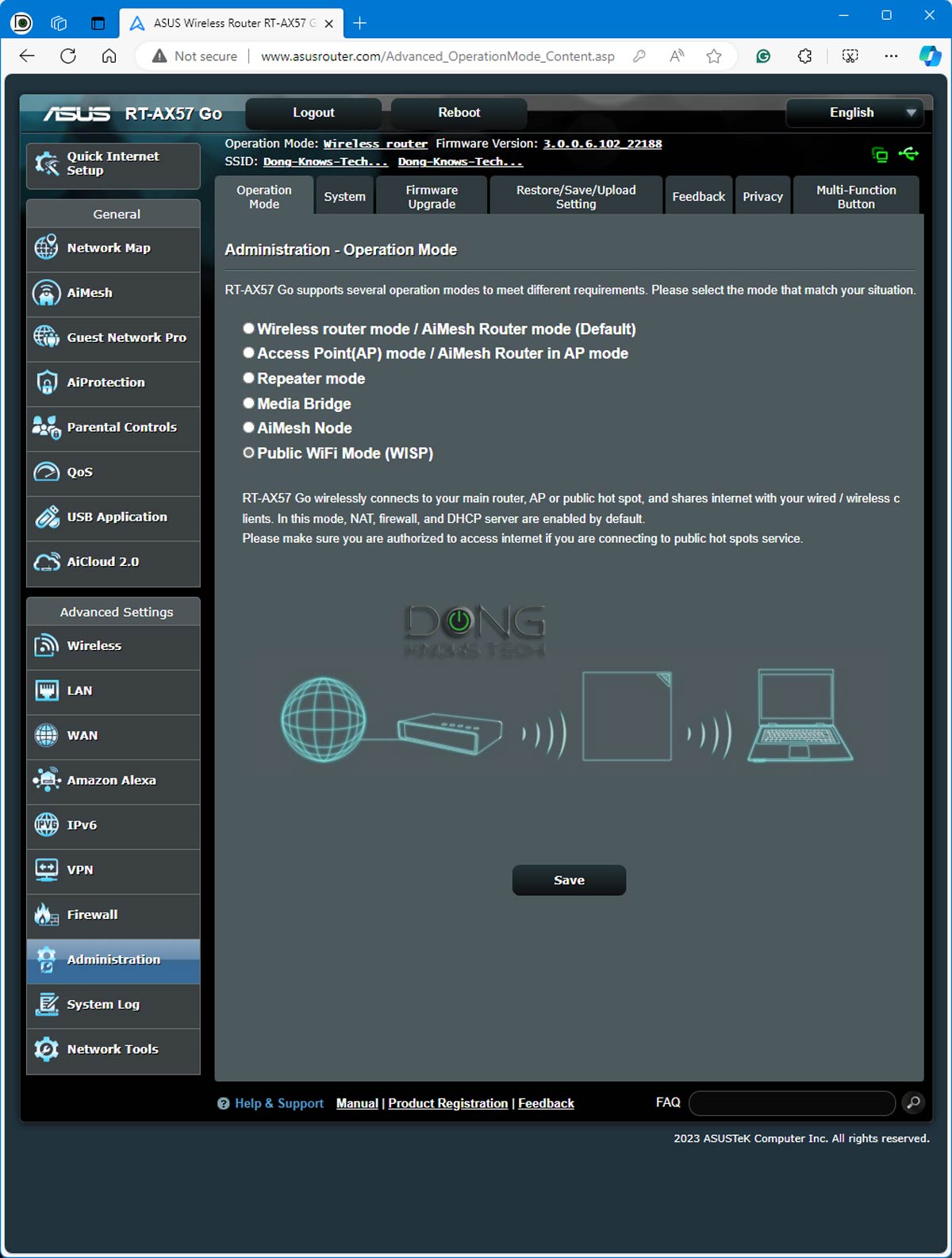
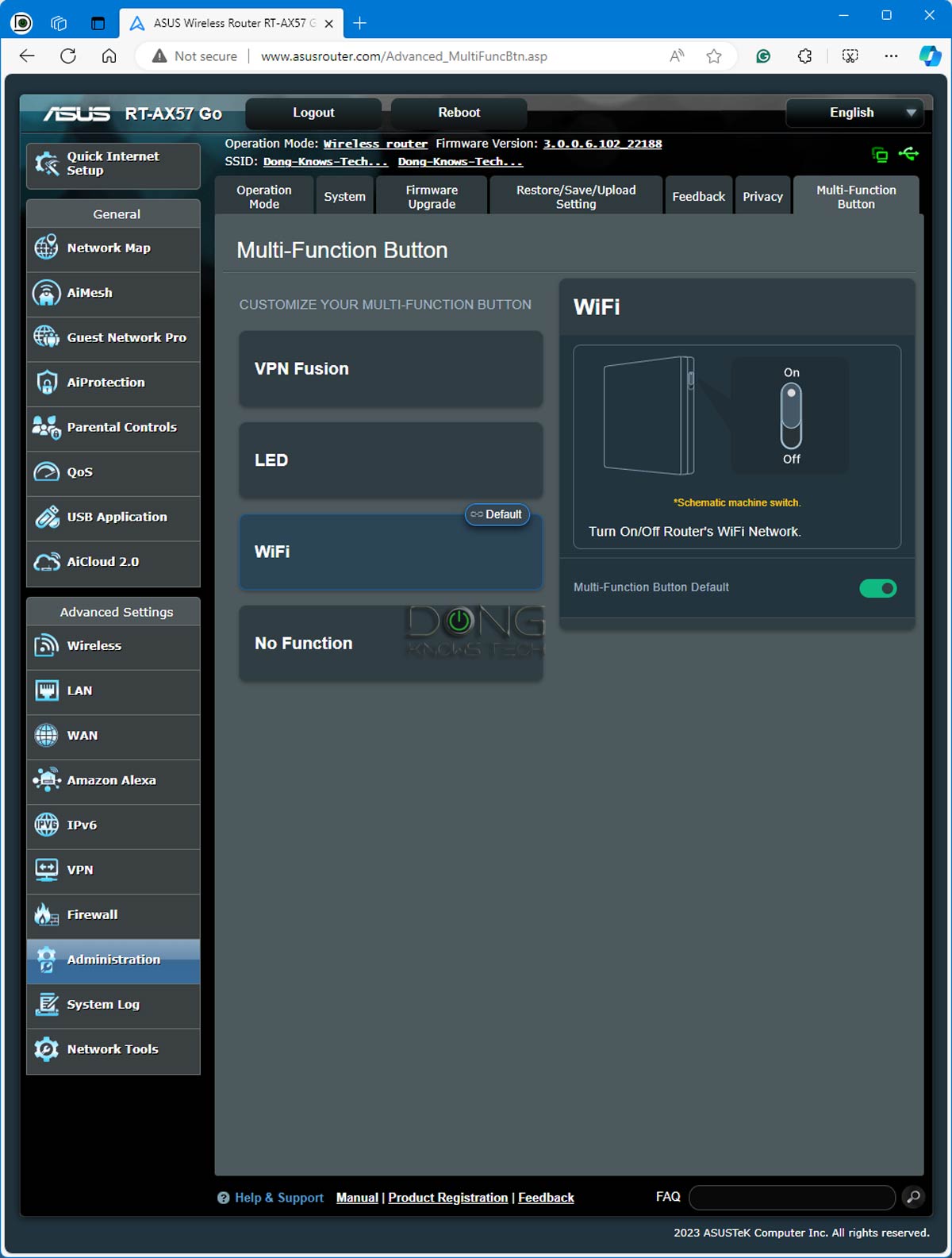
WISP stands for Wireless Internet Service Provider. It's an operating mode in which a supported router receives an Internet connection via Wi-Fi and then distributes that to multiple devices using its own separate Wi-Fi network. It works similarly to a Wi-Fi extender (or repeater) with two added elements:
- The WISP router's Wi-Fi network is shielded from that of the Internet connection to keep the connected clients safe or private.
- The WISP router can handle an incoming Internet-enabled Wi-Fi connection that requires a particular authentication method, such as a captive portal or via a paid login account.
That said, the RT-AX57 Go can handle the Internet from three separate sources: its default WAN port, via USB tethering with a smartphone, or using a WISP connection. And it can handle the first two simultaneously in a Dual-WAN setup.
Additionally, when the USB port is not used for tethering, it supports all other USB-related features. And that means you can plug a portable drive into it and turn the whole thing into a mini NAS server for data sharing or media streaming.
Last but not least, the travel router is part of Asus's AiMesh ecosystem. It can be used as the primary node for a mesh system or a satellite to extend the Wi-Fi coverage of an existing one.
It's worth noting that most, if not all, other Asus routers can do all the above. What makes the RT-AX57 Go special is the fact it's tiny. So yes, it's not without merit to say that it's the result of getting standard Asus home routers shrunk down significantly.
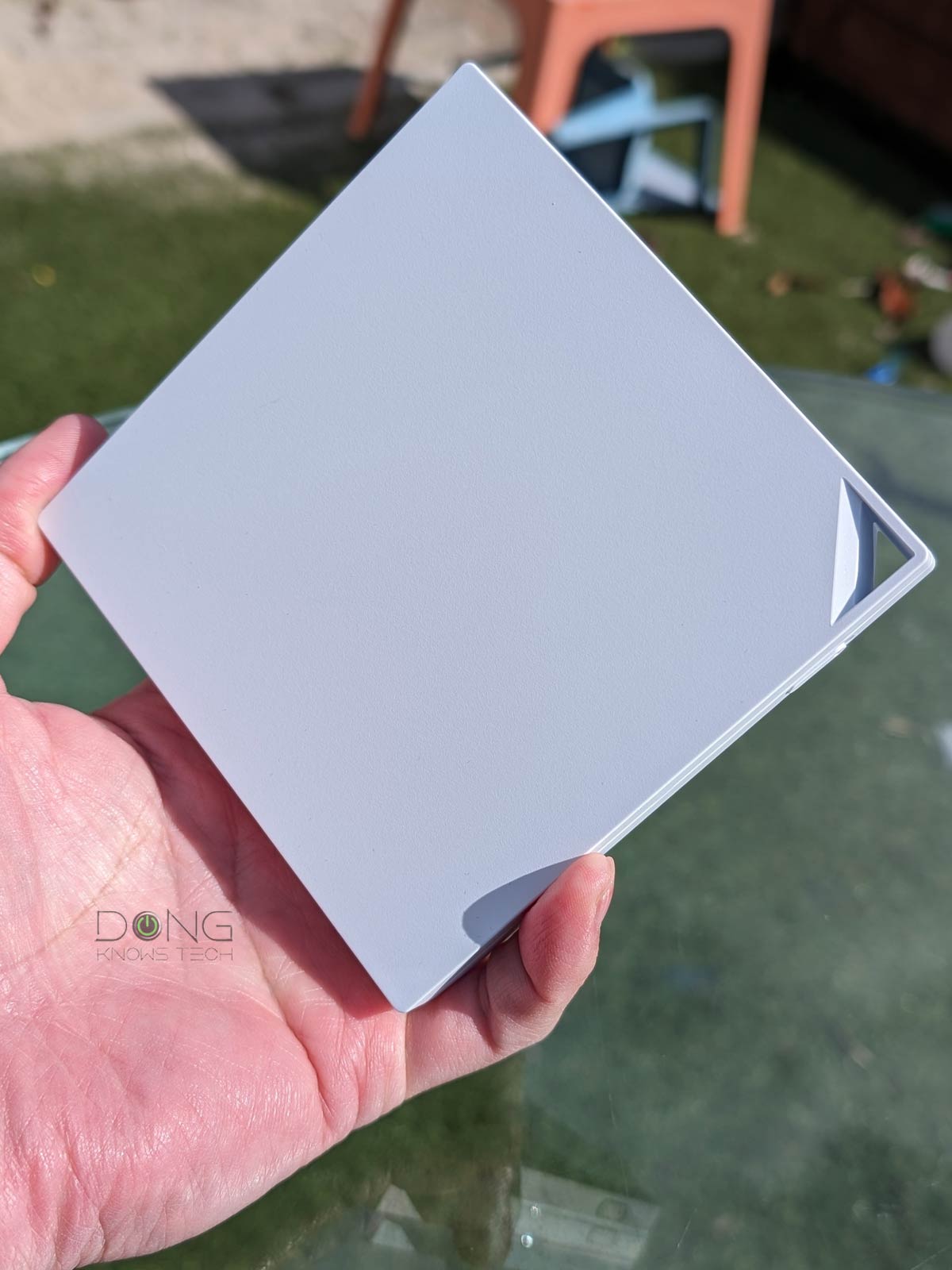
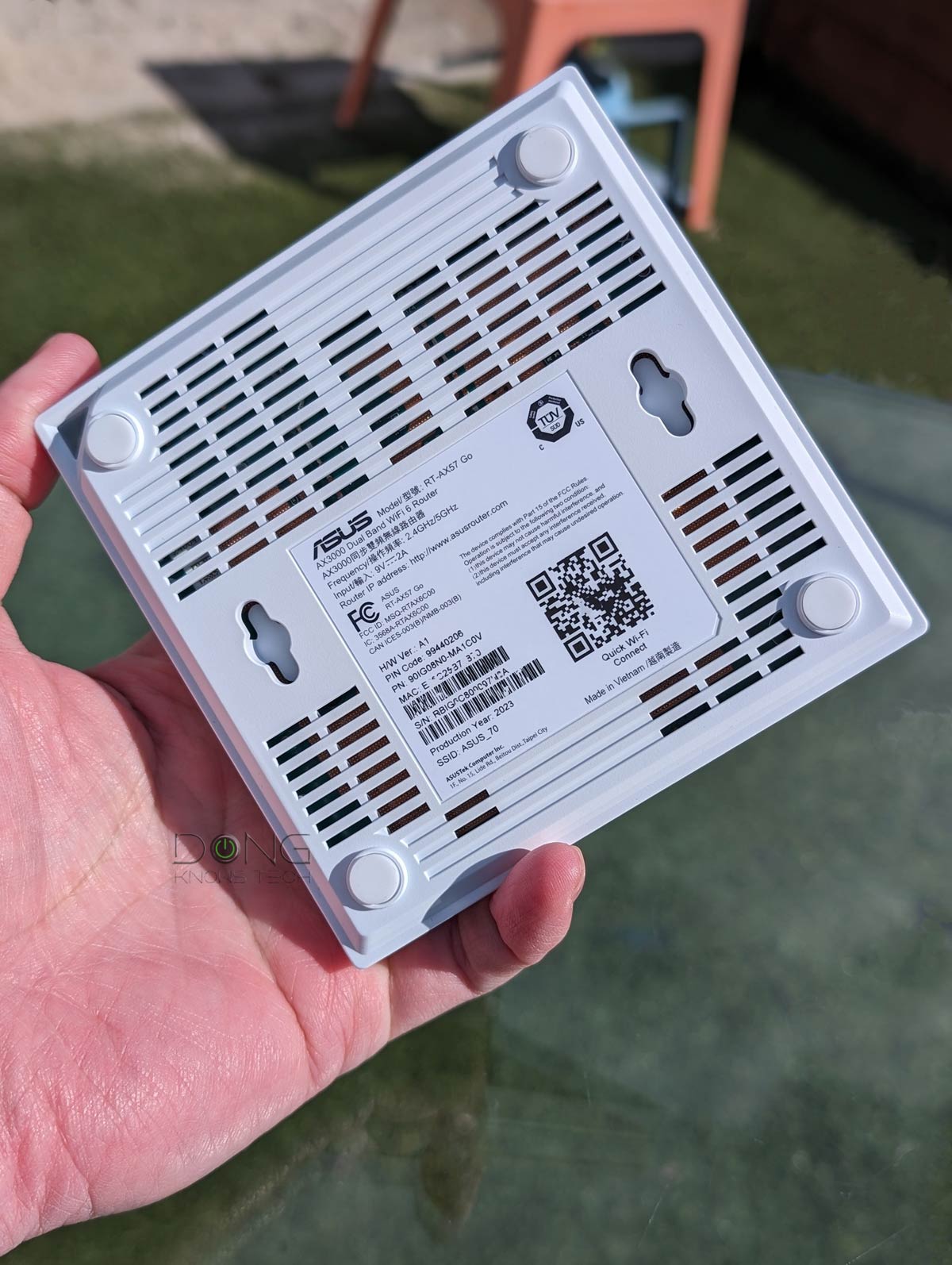
Modest but sensible Wi-Fi specs, impressive set of features
Featuring the AX3000 Wi-Fi 6 tier, the RT-AX57 Go isn't a high-end router, and it doesn't even have the 6GHz band. Still, its mid-range specs are enough for any sub-Gigabit broadband connection. For travelers, its performance easily beats the M6 Pro, as described in the performance section below.
The M6 Pro supports Wi-Fi 6E, but only the 5GHz or 6GHz band is available at the time. Considering the popularity of 5GHz devices, this type of selectable 6GHz band support is sort of useless.
The modest Wi-Fi specs make the RT-AX57 Go's lack of a Multi-Gig port understandable. Gigabit is plenty fast for anyone needing Wi-Fi on the go.
What makes the RT-AX57 Go standout is its impressive set of features, virtually the same as any Asus standard router in the RT series. Specifically, you can expect the following, among other things:
- It features universal setting restoration—you can restore it with the backup file of most existing Asus routers. This makes carrying the home Wi-Fi network on the go easy.
- It can work as a member of the AiMesh ecosystem, as a primary router, or as a satellite unit.
- It features the Guest Wi-Fi Pro with lots of options, including a login portal.
- It has all available VPN protocols and features both VPN Fusion—you can mix VPN and non-VPN connections in the same network—and Instant Guard.
- It has advanced QoS, Parental Control, AiProtection, Dual-WAN as well as many other settings and features.
Overall, compared to the Netgear M6 Pro, the RT-AX57 Go is by far more advanced and versatile. You can literally use it as a standard router for a small home. That's especially true when you consider its performance.
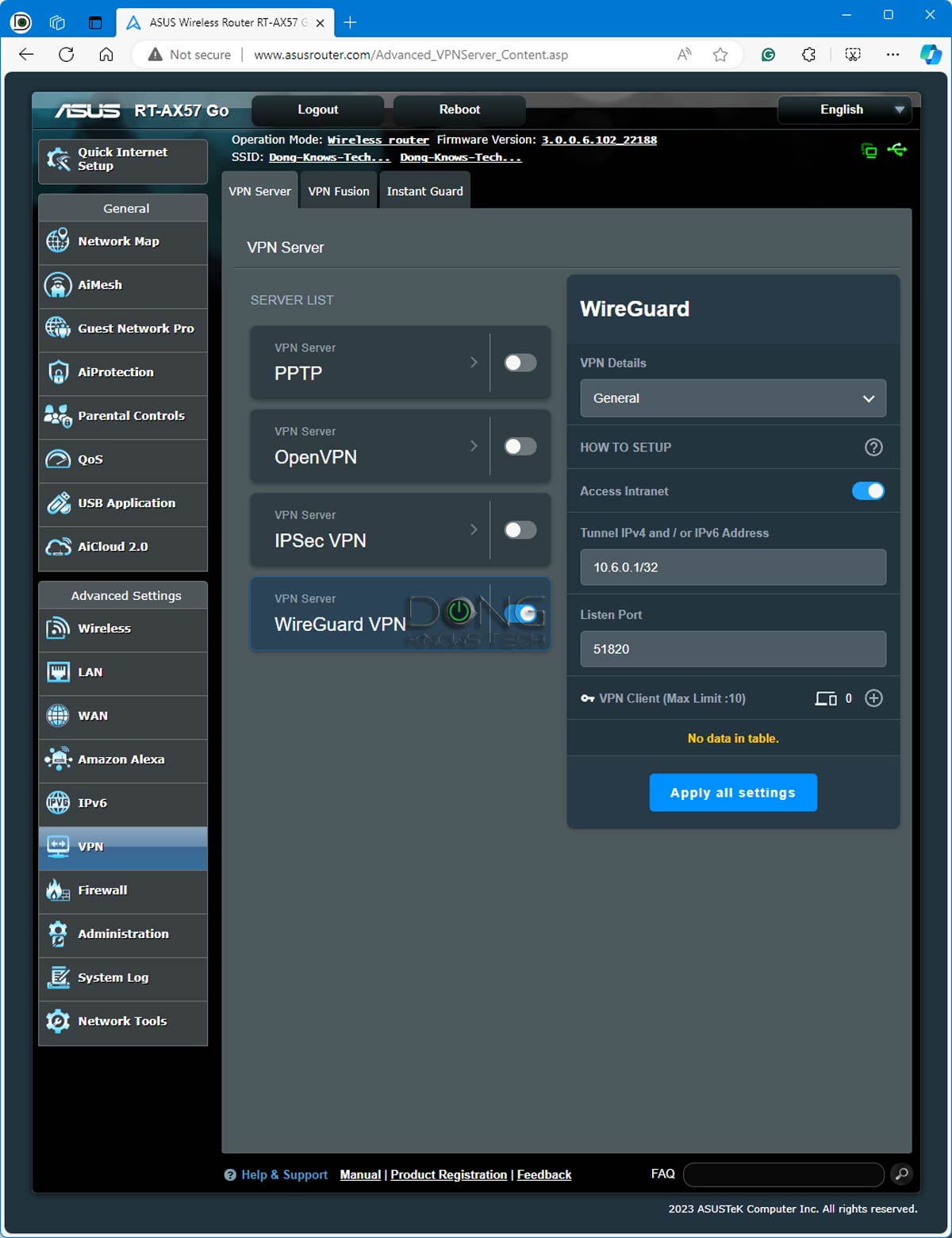
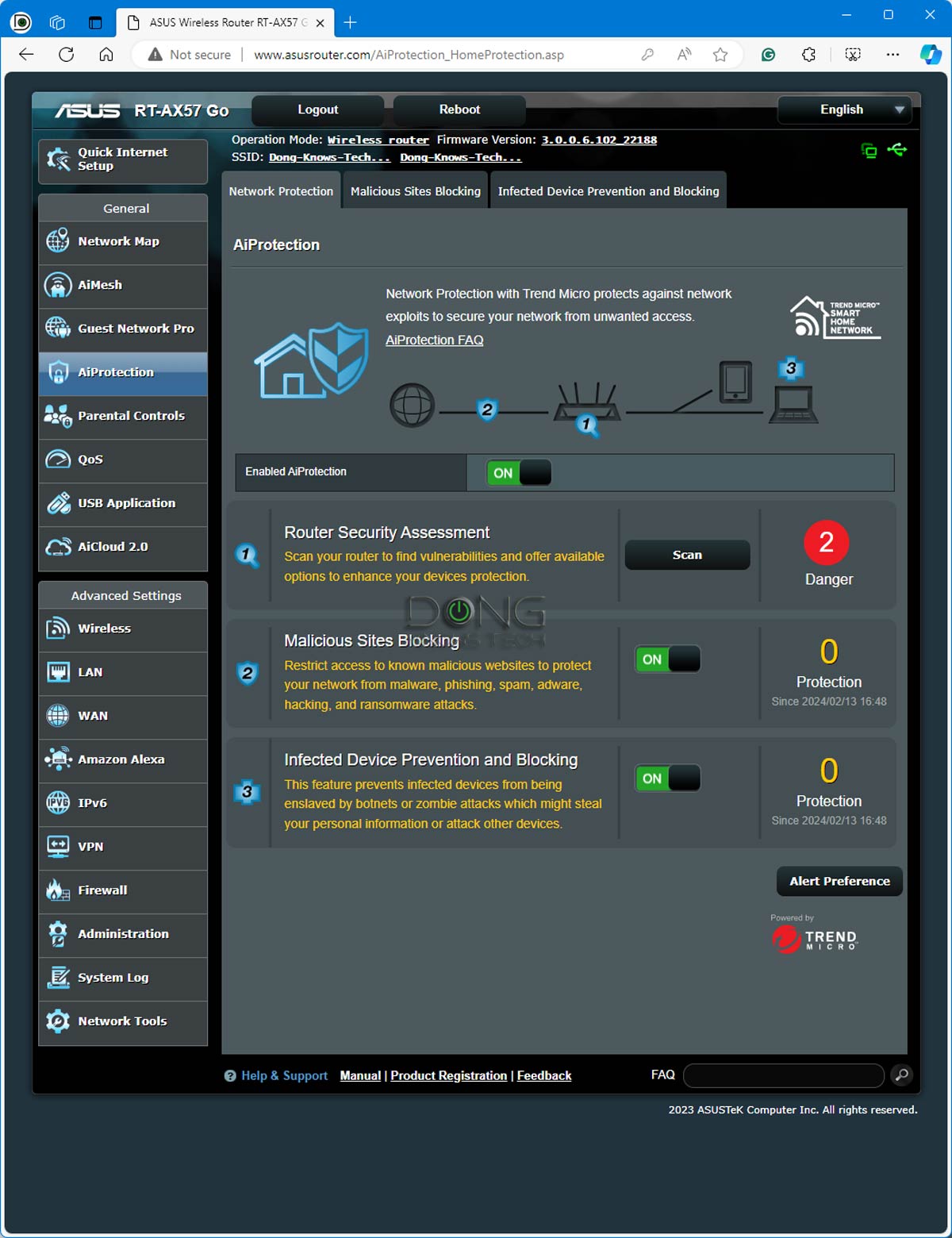
Asus RT-AX57 Go: Excellent performance
I tested the Asus RT-AX57 Go for almost a week and was thoroughly impressed with it. Considering the physical size, it was among the most impressive Wi-Fi machines I've used. And it passed my 3-day stress test with no disconnection.
Impressive Wi-Fi throughput and range
For a Gigabit router with mid-tier Wi-Fi 6, there's only so much you can expect from it in terms of throughput speeds. Specially, at best, it can only deliver sub-Gigabit performance. However, for a travel router, that's all you'd need. In fact, when compared to similarly-specs standard routers, it was faster than many, as shown on the charts. And it was definitely much faster than the Netgear M6 Pro.

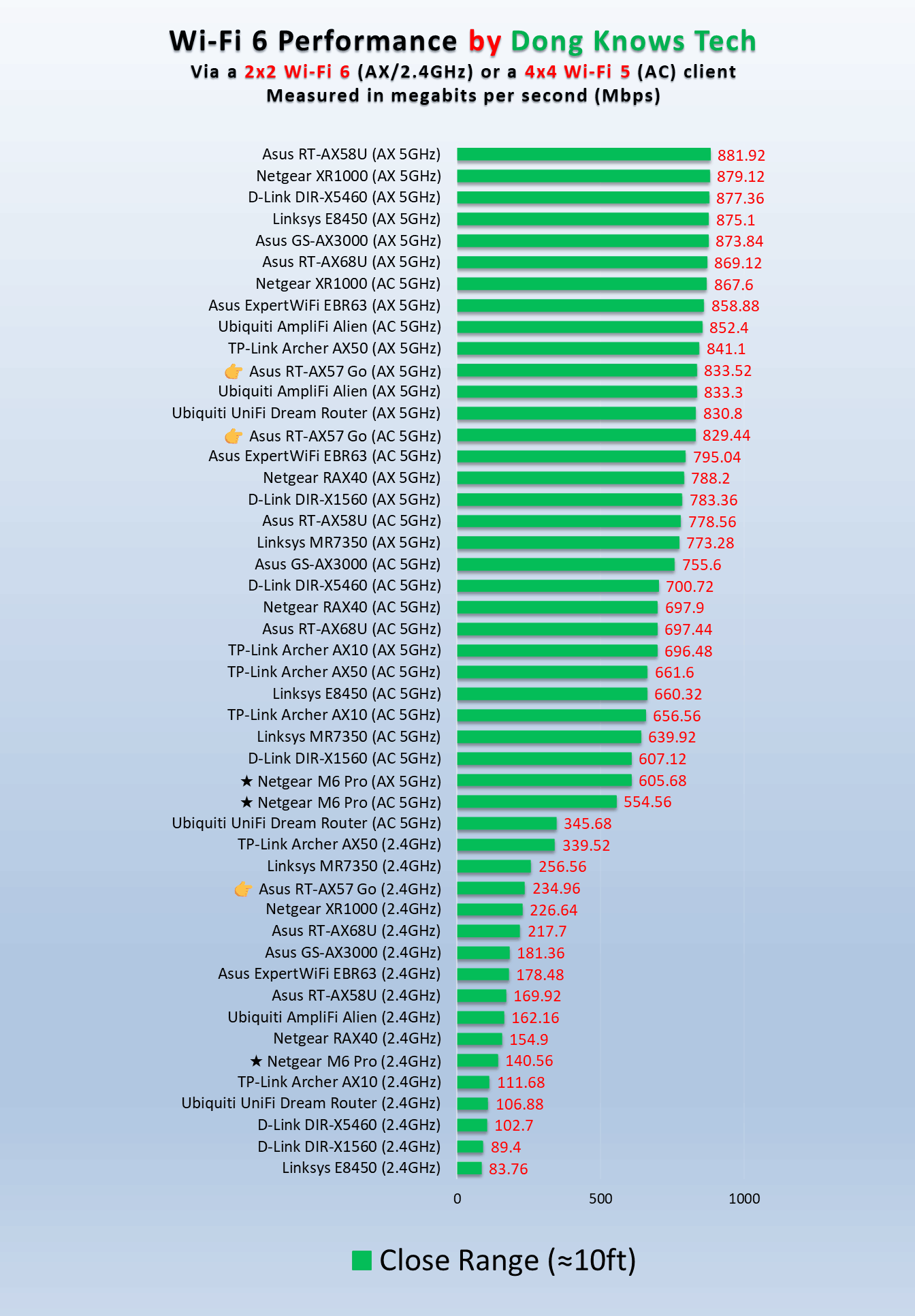
The RT-AX57 Go had impressive range, too. Its signals could reach the same distance as most AX3000 routers. It's always tricky to figure out the actual coverage of a router. However, if you have a place of around 1500 ft2 (139 m2), place this little router in the center, and chances are it'd be able to reach every corner.
Your mileage will vary, but it's safe to say if you're in a hotel room or traveling in an RV, this router's coverage will be more than sufficient. By the way, its real-world coverage, in my experience, was clearly better than the 1000 ft2 (93 m2) per Asus's claim, which was a pleasant surprise.
Excellent cellular tethering, OK network storage performance when hosting an external drive
I also tested the router's USB port with cellular tethering and network storage and had a mixed experience.

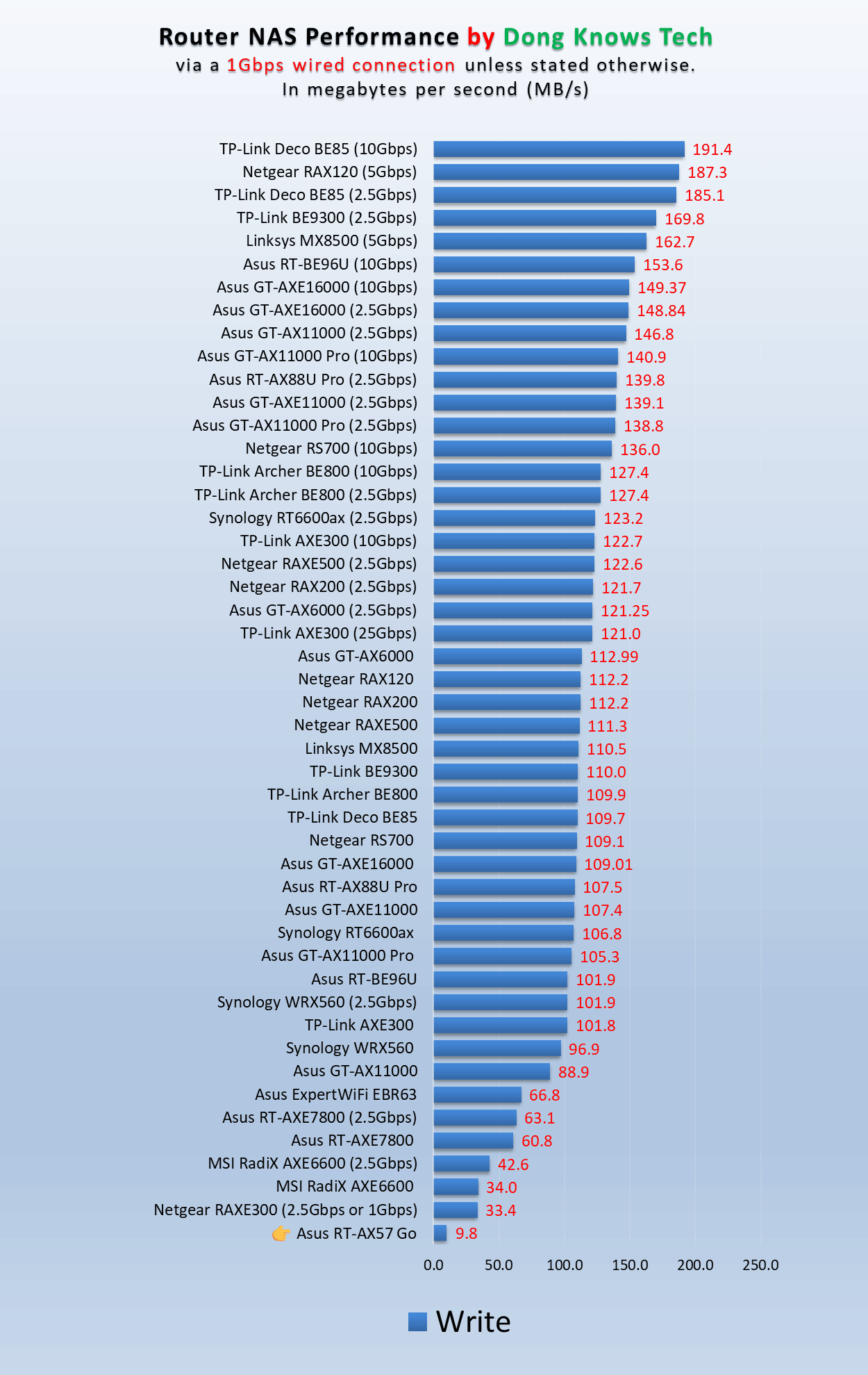
The tethering worked great. I was able to connect my smartphone, including a Pixel 8 Pro and a One Plus 11 5G, and get a fast 5G connection out of it—the same speed as the phones would get when working alone—both as a single resource of the Internet or a secondary in a Dual-WAN.
On the other hand, when I used a portable SSD with the router and shared data from it as a network-attached storage solution, the write performance was relatively quite slow, capping at around 9MB/s, just about one-9th of the read performance, as shown in the charts.
It's worth noting, though, that considering the compact size and lightweight, you should only use its USB 3.0 port without the base. Else, the router will topple easily.
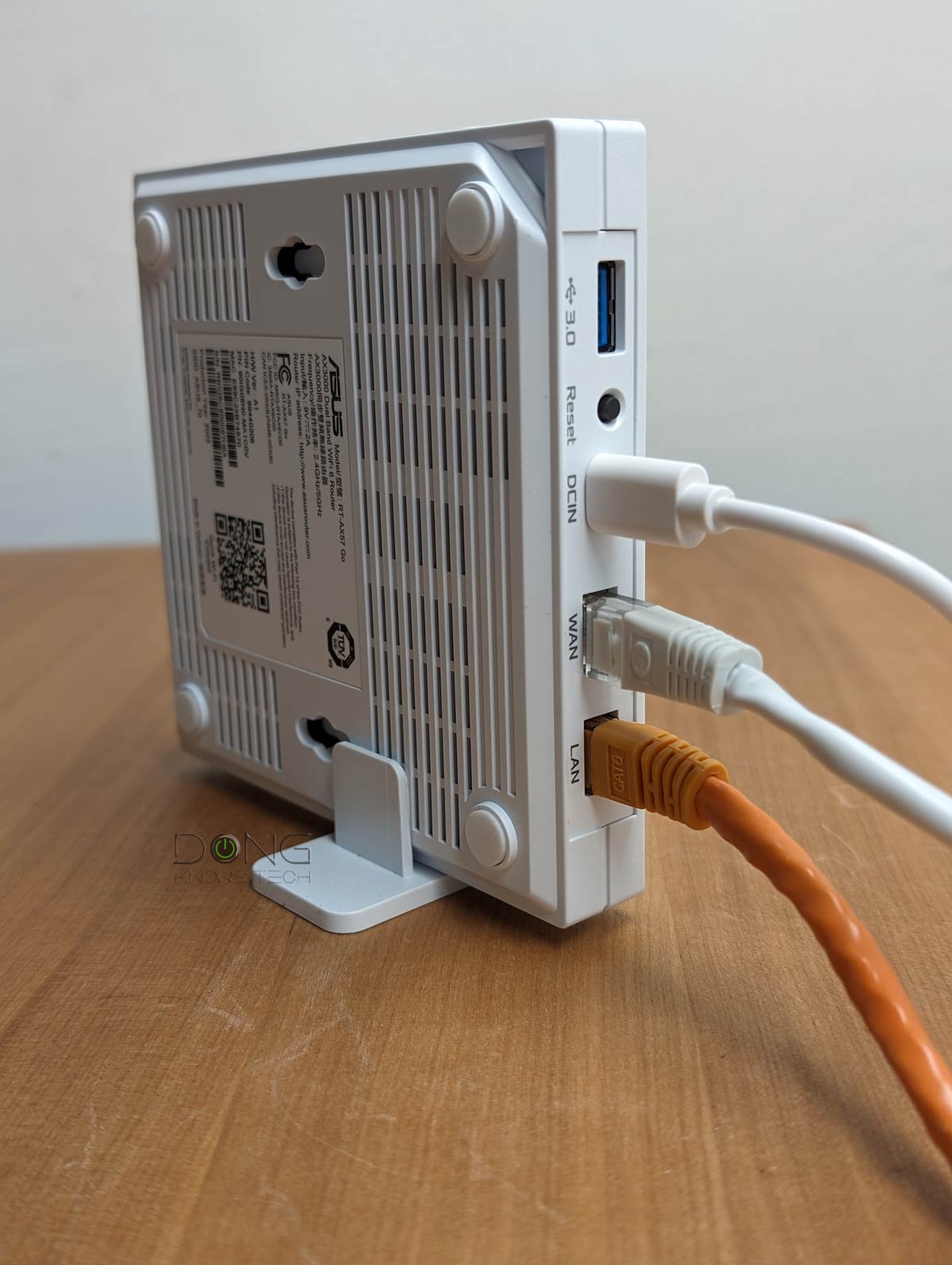

By the way, again, the router can charge a plugged-in phone, making tethering a sensible option. Also, its USB-C charger has a rated output of 9V and 2A, which is within the USB Power Delivery specifications—it can be used to charge any other USB-C device. Conversely you can use many USB-C chargers or power banks with the RT-AX57 Go, making it even more fitting as a travel router.
Asus RT-AX57 Go's Rating

Pros
Excellent performance for the hardware specs; compact design with versatile broadband support
Identical features and network settings as full-size routers; advanced features available free-for-life
Full web interface with a useful optional mobile app; standard USB-C charging
Cons
No 6GHz band support; mid-range Wi-Fi 6 specs; no Multi-Gig ports
No built-in cellular modem or SIM slot
No battery option
Conclusion
The Asus RT-AX57 Go is not a simple travel router. In more ways than one, it's a standard versatile Wi-Fi 6 router that's compact and light enough for you to carry on the go.
This little Wi-Fi machine will work well for those needing sub-Gigabit bandwidth and living in a small apartment or a studio. Have a board or an RV and need Wi-Fi while roaming the world? Get one today!


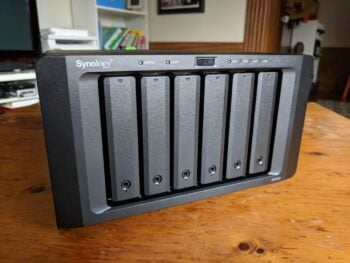

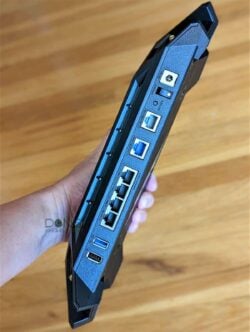
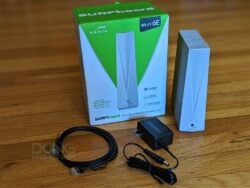

This seems like a perfect thing to use as a AI-mesh extender, that can be more easily hidden away/wall-mounted, instead of the rather bulky RP-AX58.
True that.
Great review.
Can you use a USB 4G modem dongle rather that having to tether your mobile?
That would depends on the local provider, Dennis. That’s the case of all Asus routers with an USB port. Some modems work, others might not. But if you use a phone, that always works.
I’d be interested to know whether and how this AX57 router would work with popular and easy to use VPN services {…}. Also above someone mentioned using this on a plane. But I guess the AX57 wouldn’t be able to work using a typical portable power bank, or even a car cigarette lighter phone charger, right?
Third party VPN services are router-agnostic, Noel. That’s just how it is. There’s info on this router’s power usage in the review. Put two and two together!
is it possible to use the wisp function with a smart phones wifi hotspot function? so phone functions as the wifi hotspot and is not connected via usb tethering..
Yes, you can use the WISP mode with *any* existing Wi-Fi network you have access to.
great thx!!
👍
How would you compare this travel router/hotspot device to others? {…}
Thank you.
No, Currter. Please use the site search to find out what I have covered. If you represent the hardware vendor, please use the contact page. If not, here’s the donation page in case you want something to be reviewed in your honor. 🙂
Thank you
Hello Dong,
Great review as always. I have a question about Link Aggregation on Asus routers. I read the support page of Asus and it seems that they use 802.3ad bonding. I need to select the xmit_hash_policy on the receiver. Which one would you recommend?
That depends on what you want, but any of the three would work. If you are not sure, pick the default (Layer 2).
So quick question: Would the netgear have all the same WISP features as the Asus? For example, I use my little WISP router to login to inflight internet and hotels that restrict the number of active devices per login. By using the WISP router in between, it allows me to have unlimited devices sharing the internet at onece (very helpful inflight when you want your phone and computer actively using the internet at once on America/United/Delta etc). Would both the Netgear and Asus be able to do this WISP function or is one more capable than the other? I ask because I can’t find any WISP documentation on the Netgear site for the M6 but I do see it for the Asus Go.
Yes, M6 Pro does. Read the review for more. You definitely want to read that review before buying it.
There’s ready and cheaper product than Asus RT-AX57.{…}
It’s always in the details, Ah. There are many other cheaper travel routers. I wasn’t born yesterday.